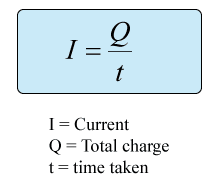CHAPTER 7: ELECTRIC CIRCUITS
Blogger's note: The information I posted aren't mine. They were all taken during our discussion in our Advanced Physics II class with Mr. Mohamad Ali Ramber and some additional informations from the internet (sources cited at the end of each post). The pictures and animations aren't also mine. Credits to the rightful owners who placed it in google This was the summary of our whole discussions during our second quarter in our class.
In the household circuit, the ff are the main components: meter, main switch, panel board, sockets, loads, connecting wires and switches.
Series of electricity travel:
DROP WIRES -- ELECTRIC METER -- MAIN SWITCH -- PANEL BOARD -- LIGHTING & POWER CIRCUITS
Note: Moving electrons constitute electric current.
Electric current is measured by determining the number of charges passing through a perpendicular cross-section of the conductor per unit of time.

Series of electricity travel:
DROP WIRES -- ELECTRIC METER -- MAIN SWITCH -- PANEL BOARD -- LIGHTING & POWER CIRCUITS
Note: Moving electrons constitute electric current.
Electric current is measured by determining the number of charges passing through a perpendicular cross-section of the conductor per unit of time.
The unit of electric current is ampere (A). It is equal to 1 coulomb/second. The direction of the conventional current is from positive to the negative terminal although electrons move from the negative toward positive terminal.
Electromotive force (emf) -energy transferred to one coulomb of charge within the battery.
Potential Difference -energy transferred to a circuit component per unit charge between the two terminals.
Note: emf and PD are both referred to as VOLTAGE.
CONDUCTORS AND INSULATORS
Ohm's Law and Formulas
Ohm's Law [after physicist Georg Ohm] states that: In an electrical circuit, the current which passes through a conductor between two points is proportional to the potential difference (i.e. voltage drop or voltage) across the two points, and inversely proportional to the resistance between the two point. In mathematical terms, this is expressed as:
I=V/R or V=IR
where I is the current in amperes, V is the potential difference (voltage drop or voltage) in volts, and R is the resistance which is measured in ohms.
The instantaneous electrical power P delivered to a component is the product of voltage and current, which may be expressed in mathematical terms as:
P=IV
where P is the instantaneous power in watts (joules per second or volt-amperes). The terms I, R and V are as described above.
Ohms Law Formula Wheel
Use the Ohms law formula wheel below for all the mathematical relationships between P, I, V and R.

Ohm's Law Formula Wheel
ELECTRICAL CONNECTIONS
Series Connection -only has one route from the source through several loads and back to the source. If a bulb is removed or busted, the circuit is open so there is no current.
Parallel Connection -two or more loads are connected to a voltage source in such a way that the total current is divided among the loads.
ELECTRICAL ENERGY CONSUMPTION
Power rating indicates the electrical energy the appliance uses over a period of time
E = P/t
Where E = electrical energy
P = power (watts or kilowatts)
t = seconds or hours
Sources:
INTERACTIVE PHYSICS NOTEBOOK 2014-2015


.jpg)




